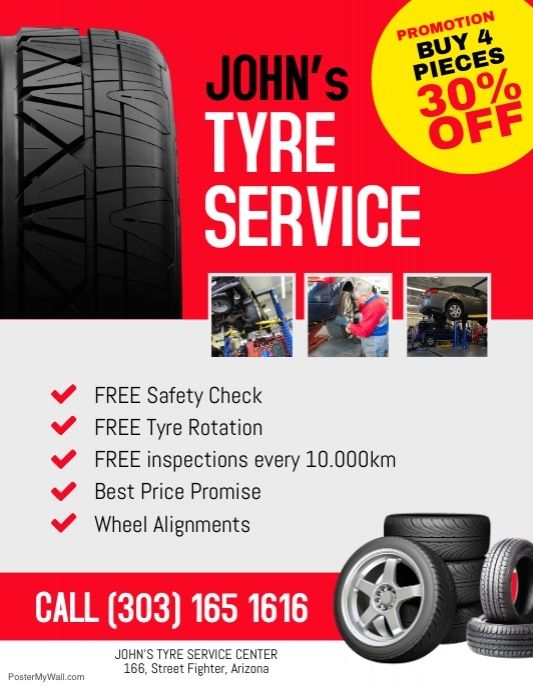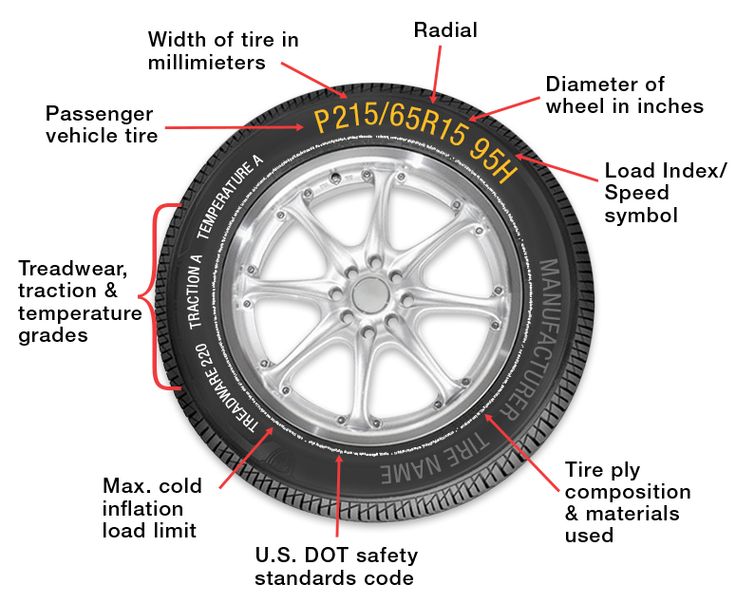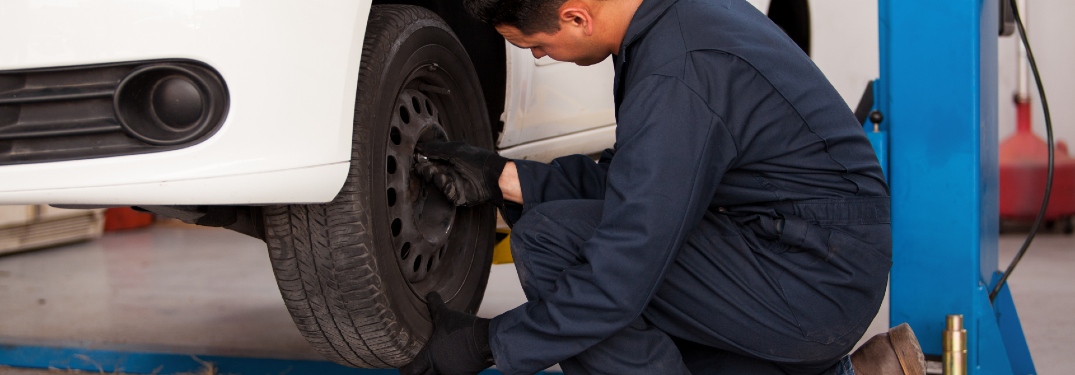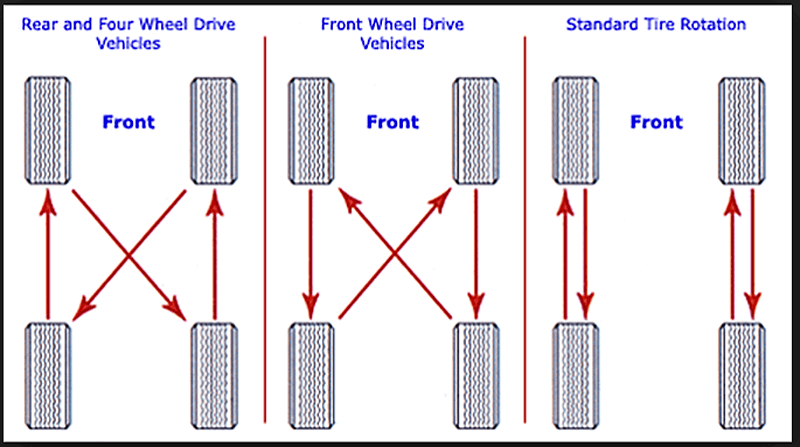Car maintenance is an essential aspect of owning a vehicle. Tire rotations are one of them, which you can get at all Discount Tire stores.
So, how much is a tire rotation at Discount Tire?
Tire rotations at Discount Tire costs around $15. Also, if you need a Discount Tire wheel balance or tire rotation for the tires bought from them, it’s free.
Go to any Discount Tire stores, and you’re all set and ready. So, now you know the service price for a tire rotation at Discount Tire.
Table of Contents
In most stores, the tire rotation service fee is about $24-$50. Some auto shops might even charge you upwards of $120. You usually pay with how much additional services you’re getting.
You’ll get a slightly lower price at $15 per tire in a Discount Tire shop. However, if you purchase your tires there, you’ll get free rotations for the tires.
Promos like these are usually the case as well in other auto-shops. But, the $15 price at Discount Tires is still substantially better than the more expensive price points.
You also have the option of using a coupon when you want to get lower prices on other services. So, save those coupons and get more services at a budget-friendly price.
What’s better than a cheap tire rotation? A free one! Through various Discount Tire services, you’ll get them at no additional charge.
If you bought your tires or wheels at Discount Tire, they’d offer you a free tire rotation or balance. Even buying new wheels should cost less.
Just bring your vehicle there and follow some instructions, and you’re good to go. Don’t forget to bring your receipt for some extra proof that you bought your tires at Discount Tire.
Don’t forget to bring your receipt for some extra proof that you bought your tires at Discount Tire.
Yes, But before rotating those tires at home, you should know whether your tires are classified as directional or non-directional tires.
Switching your front tires with your rear tires and vice versa is the way to rotate directional tires. The tires you exchange must be on the same side.
Instead of rotating a directional tire with the same side pattern, you should employ a criss-cross pattern when rotating a non-directional tire.
Tools needed:
Step 1: To maintain safety throughout the procedure, make sure that you apply the parking brake.
Step 2: On your wheels, remove all of the lug nuts. Doing this makes removal simpler when your car is raised,
Step 3: With a jack, elevate your car and use jack stands or blocks to maintain its raised position. Then, repeat on the other sides and rotate according to a tire’s directional or non-directional characteristic.
Some people use four jacks to lift their car off the ground completely, but I don’t recommend this because it can lead to accidents.
Step 4: Upon completion. Slowly descend your car while ensuring that all the lug nuts are secured as tightly as possible. You’re done at that point!
When should I opt for a tire rotation in Discount Tire?
Discount Tire recommends always opting for a Discount tire free rotation every 6,000-8,000 miles. Doing this ensures that your wheels are in excellent shape and wear evenly.
Doing this ensures that your wheels are in excellent shape and wear evenly.
While you’re there, consider also balancing your wheels or checking your tire pressure so you’ll get the most out of your tire maintenance needs.
However, the best way is to still check your owner’s manual for more accurate information.
Can I do tire rotations by myself?
The short answer is yes. Tire rotations can be an essential part of personal car maintenance. Not only would this save you money, but it can expand your knowledge on how to take care of your car correctly.
How long does a tire rotation take?
Tire rotations won’t take much from your day. Typical tire rotations without complications should only take about an hour at auto shops. However, if you do tire rotations by yourself, it could take a bit longer than usual, depending on your car maintenance skills.
How long can you go without a tire rotation?
Most tire manufacturers recommend rotating your tire every six months or every 7,500 miles of distance. Doing this ensures your tires are in optimal shape, so performance is not compromised.
Doing this ensures your tires are in optimal shape, so performance is not compromised.
What happens if I don’t rotate my tires?
Typically, tires can last 60,000 miles of travel, provided they are well maintained and away from hazards like sharp objects or rough roads.
If you neglect tire rotations from your service maintenance, the uneven wear and tear could cause your tires to lose 17% of their life, roughly 10,000 miles.
Worn tires can also pose a danger when driving. The lack of traction can severely affect your handling, especially on wet surfaces. Drive safer, and don’t forget to rotate your tires.
To sum it up, tire rotations are a cheap and highly effective car maintenance method. Moreover, there isn’t a downside to doing them; the most you can lose is an hour of your time.
Moreover, there isn’t a downside to doing them; the most you can lose is an hour of your time.
Tire rotations stretch the life of your tires and make for safer driving conditions on the road. So take an hour or two out of your weekend to do them yourself. Or, make a trip to Discount Tire for a pro to do it for you.
Either way, you can’t lose with tire rotations. I hope this article has shed some light on the itching question, “how much is a tire rotation at Discount Tire?”
One of the best things you can do to improve wear on your tires is to rotate your tires and what better place to do it than Discount Tire. If you bought your tires from them the rotation is free along with tire balancing. If you did not buy your tires from Discount Tires you can still get the same tire lifetime service for $22 per tire.
What's In This Guide?
Discount Tire offers free rotation and wheel balance for any customers that have bought tires from them. Though their policy is to only provide this free service to returning customers, they are known to sometimes not charge for a tire rotation.
Though their policy is to only provide this free service to returning customers, they are known to sometimes not charge for a tire rotation.
If they do charge you, which they will most likely do if you have not bought your tires from them, they offer a lifetime of tire maintenance service which includes balance and rotation in addition to TPMS Rebuild kits (or rubber valve stems), flat tire repair, air pressure checks, and tire condition inspections, all for the price of $22 per tire.
If your tires did not come with a warranty like the above from the tire dealership, then this is not a bad deal. On average a set of tires will be rotated around 10 times. At an average of an hour per rotation, you are paying around $8.8 per rotation which is more expensive than say Walmart, however; you get all the other benefits included in the package.
What Is a Tire Rotation?I once had someone tell me that their tires rotate plenty when they drive. Though a good joke, this is not what is meant when talking about rotating tires. When you rotate your tires, you are switching the tires’ positions with each other.
Though a good joke, this is not what is meant when talking about rotating tires. When you rotate your tires, you are switching the tires’ positions with each other.
There are a few different ways in which tires are swapped, most common is the front to back and the back to front but crossed over. Others include the straight front to back, left to right, back to front and front to back but crossed, and variations of these but involving a full-size spare tire.
Why Should You Get Your Tire RotatedTire rotations are done in order to prolong the tread life of your tires. But why does this help? Aren’t all four tires on the same road anyway, all going at the same speed? Well, yes, but your wheels have different jobs.
The front wheels are always used for turning, and depending on your vehicle, some or all of your wheels deliver power from the engine to the road surface. Additionally, the braking percentages are different for each wheel, again depending on what kind of drive system your vehicle has.
For example, the front-wheel-drive car typically has 80% braking in the front and 20% in the rear. All these factors affect your tires in different ways. Your driving tires will always experience more wear due to putting down the power and because they usually have a higher percentage of braking.
Your tires also experience a different kind of wear when used for turning. The outer edge of the tire will be worn away much faster compared to the more even wear of rear-wheel tires. All in all, your front tires will most likely be worn out before your rears.
Rotating your tires will not only result in a more even level of wear but also a more uniform wear pattern across all tires. So how often should you rotate your tires?
How Often Should You Get Your Tire Rotated?A good rule of thumb is that every time you get your oil changed, you should rotate your tires. But how many miles does that translate to? A few years ago, you had to get an oil change every 3,000 miles, however, with modern lubricants, that number has been increased substantially.
Today, oil servicing is recommended by manufacturers at around 5,000 to 7,500 miles. This number can even be double that at 15,000 miles if your vehicle takes full-synthetic oil. Synthetic oil’s mileage is quite high for rotating your tires, however, if your driving style isn’t too aggressive, then the average mileage of 5,000 to 7,500 miles is a good rotation cycle.
Unfortunately, that average distance does not apply to all vehicles. For front-wheel drive (FWD) and rear-wheel drive (RWD) vehicles, this amount does hold true, however, all-wheel drive (AWD) and four-wheel drive (4WD) vehicles’ tires need to be rotated more frequently. Typically, between 3,000 and 5,000 miles.
This means that if you are driving an FWD or RWD vehicle you can get your tire rotated every time you get an oil change. But, if you are driving a 4WD or AWD vehicle, you might want to get your tires rotated in between oil changes as well as when you get an oil change.
Are There Any Negatives to Getting Your Tires Rotated at Discount Tire?There have been some complaints online about Discount Tire’s free tire service that has me a little worried. Though I have not experienced this myself from Discount Tire, I have experienced the following at other establishments. Luckily, I am a mechanic so I could pick up on it.
Though I have not experienced this myself from Discount Tire, I have experienced the following at other establishments. Luckily, I am a mechanic so I could pick up on it.
People online say that there is no such thing as “free” service from Discount Tire. That they will always poke and prod your vehicle for issues so they can offer to fix it and make a buck. I’m sure that anyone that has gone to Jiffy Lube knows what I’m talking about.
That being said, not every location will do this, there are always going to be a bad apple in the bunch, it doesn’t mean that all companies or shops do it.
ConclusionIn conclusion, Discount Tire will balance and service your tire for free if you bought your tires from them. If not, you can still go to them, but you’ll most likely have to buy the $22 per tire care package. This is pretty cheap when you do the math of total tire rotations and all the other services that come along with the package.
0003Related materials
7 rubber signals: what the tire says about car problems
How do you know when tires are completely worn out and it's time to change them? Everything is simple. For summer tires, the limit is 1.6 mm of residual tread depth, and for winter (or all-season tires used in winter) - 4 mm. Modern summer tires can travel from 40,000 to 70,000 km, depending on driving style and vehicle characteristics. An average motorist rolls such a mileage on summer tires in 2-3 seasons. Moreover, wear implies not only a decrease in tread depth. For millions of cycles of deformation, the strength of the carcass and its adhesion to the layers of the rubber compound are violated. In short, every 2-3 years you should buy a new set of tires.
For summer tires, the limit is 1.6 mm of residual tread depth, and for winter (or all-season tires used in winter) - 4 mm. Modern summer tires can travel from 40,000 to 70,000 km, depending on driving style and vehicle characteristics. An average motorist rolls such a mileage on summer tires in 2-3 seasons. Moreover, wear implies not only a decrease in tread depth. For millions of cycles of deformation, the strength of the carcass and its adhesion to the layers of the rubber compound are violated. In short, every 2-3 years you should buy a new set of tires.
In case of irreparable damage to one of the tires and a relatively high total mileage of the kit, it is also worth considering replacing it. Well, or about buying at least a pair of new tires, which, for any type of drive, should be installed on the front axle. We put two tires back - the most decent of the remaining ones.
Many motorists drive only a few thousand kilometers a year. This does not mean that the tires will serve you for several decades. According to Russian requirements (GOST 4754-97), the service life of passenger car tires is 5 years from the date of manufacture. And for example, Continental recommends that all car tires (including the spare tire) older than 10 years old should be replaced with new ones. Therefore, with small runs, you can navigate for ten years. The date of manufacture of the tire is indicated on the sidewall. Usually it is an oval with four numbers. The first two are the ordinal number of the week in the year, the last two indicate the year.
This does not mean that the tires will serve you for several decades. According to Russian requirements (GOST 4754-97), the service life of passenger car tires is 5 years from the date of manufacture. And for example, Continental recommends that all car tires (including the spare tire) older than 10 years old should be replaced with new ones. Therefore, with small runs, you can navigate for ten years. The date of manufacture of the tire is indicated on the sidewall. Usually it is an oval with four numbers. The first two are the ordinal number of the week in the year, the last two indicate the year.
Related materials
How to change the car yourself - detailed instructions
Tires should be rotated periodically in accordance with the vehicle manufacturer's recommendations - information on this can be found in the owner's manual.
We can advise you to carefully use the tires and, most importantly, to store them correctly in the off-season. First of all, during storage, it is important to exclude direct sunlight from hitting the tires, which greatly age the rubber. Tires without rims should be placed vertically, and stacked on rims.
First of all, during storage, it is important to exclude direct sunlight from hitting the tires, which greatly age the rubber. Tires without rims should be placed vertically, and stacked on rims.
And before installing tires on a car at the beginning of the season, evaluate their condition. There should be no cracks in the tread and sidewalls. The tire should not be dry, it should remain rubbery and not look like baked plastic.
Related materials
Driving on badly worn tires - will I be fined or not?
Winter tires have a much shorter life span. They almost always fail due to the wear of the treadmill, because the tread of a new tire is 7–8 mm, and only 3–4 mm remain working height. If the tires are studded, then with such wear there are very few metal elements left, and the tire will not provide adequate safety when driving on a winter road. However, not only spikes, but also Velcro, with such a degree of wear, also lose most of their capabilities.
The real life of winter tires rarely exceeds 30,000 km. "Bald" winter tires without studs can be re-rolled in summer, but their grip on hot road surfaces will be very poor. This must be taken into account, especially when braking.
***
So: tires that have not yet worn out along the tread (that is, up to 1.6 mm tread depth for summer tires, 4 mm for winter tires) are changed either ten years after the date of issue, or when the rubber layer cracks tires or damage.
Our new video
Peugeot from Iran: to take or not? Video
4 cool features of Moskvich 3: blitz test of the first serial crossover
Geely Tugella: just look!
Did you like the note? Subscribe and you will always be in the know!
Driving on Yandex.Zen
News smi2.ru
Car tires - elastic shell mounted on a disc rim. It is the tires that dampen the small vibrations that occur due to imperfect roads and compensate for the inconsistency in the trajectories of the wheels. The characteristics of tires affect: driving comfort, maneuverability and vehicle stability. However, even the highest quality rubber eventually deteriorates. Therefore, every driver should know how to correctly determine the degree of tire wear in order to replace them in time. Car and truck tires have different periods of use, depending on both the initial characteristics of the products and the operating conditions.
It is the tires that dampen the small vibrations that occur due to imperfect roads and compensate for the inconsistency in the trajectories of the wheels. The characteristics of tires affect: driving comfort, maneuverability and vehicle stability. However, even the highest quality rubber eventually deteriorates. Therefore, every driver should know how to correctly determine the degree of tire wear in order to replace them in time. Car and truck tires have different periods of use, depending on both the initial characteristics of the products and the operating conditions.
Tires wear out not only due to operational loads. They are characterized by natural aging, since the rubber compound from which the tires are made gradually loses its elasticity and resilience. The use of such rubber leads to a deterioration in vehicle controllability and creates dangerous conditions due to the high probability of tire rupture on the way.
In accordance with GOSTs 4754-97 and 5513-97, the warranty period for car tires is 5 years. Foreign manufacturers claim that the working life of tires is 5-10 years. There are no legislative acts obliging drivers to change tires after this period, but in order to create safe driving conditions, the driver must take into account the recommendations of GOST. Manufacturers usually set their own warranty periods.
Michelin, Bridgestone, Nokian, Continental, Dunlop, Pirelli, Yokohama:
| Brand | Warranty period declared by the manufacturer |
| Bridgestone | Tire dependent - 3-6 years |
| Nokian
| 5 years |
| Continental | 10 years old |
| Dunlop | Tire dependent |
| Pirelli | Tire dependent |
| Yokohama | 5 years |
| Michelin | 10 years old |
During the warranty period, the responsibility for identified significant defects rests with the manufacturer. The owner of the vehicle will be forced to eliminate defects on his own if there have been:
The owner of the vehicle will be forced to eliminate defects on his own if there have been:
If the vehicle is used intensively, it may be necessary to replace the tires before the end of the warranty period. Therefore, regulatory documents establish the mileage after which you should think about replacing tires.
The maximum standard mileage is:
The actual rate of tire wear may differ from the standard values due to a whole list of factors, such as:

You can determine the need for tire replacement yourself by the following signs:
Table of minimum allowable tread depth for different modes of transport as amended on 01/01/2015
| Minimum allowable remaining tread depth | Type of transport |
| 0.8 mm | L - motorcycles, mopeds, quad bikes |
| 1.0 mm | N2, N3, O3, O4 - trucks with a maximum permissible mass of more than 3. |
| 1.6 mm | M1, N1, O1, O2 - cars, trucks and trailers with a maximum authorized mass of less than 3.5 tons |
| 2.0 mm | M2, M3 - buses |
| 4.0 mm | Winter tires marked M+S, M&S, M S, the amount of residual tread depth does not depend on whether tires are installed on cars or trucks |
 If it does not exceed 50% of the original value, then the tires must be replaced.
If it does not exceed 50% of the original value, then the tires must be replaced. Important! If the outer edges of the tire wear faster, the inflation pressure is too low. Accelerated wear of the central part indicates excessive pressure. Wear on one side indicates a violation of the toe angle. Uneven surface wear is evidence of aggressive driving with rapid acceleration and hard braking.
You can extend the life of your tires by doing the following:
Normative document regulating the terms and conditions of tire storage - GOST 24779-81.